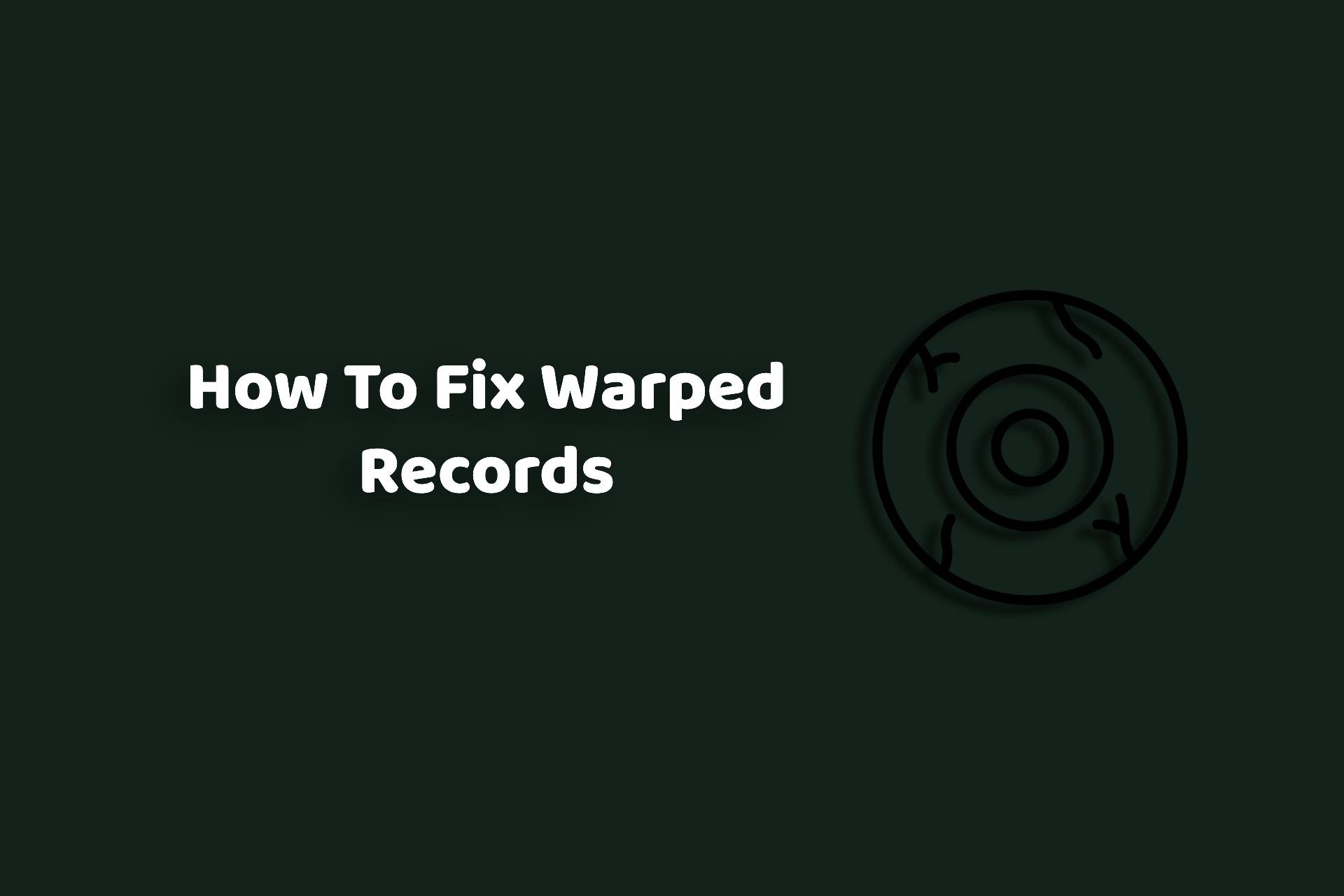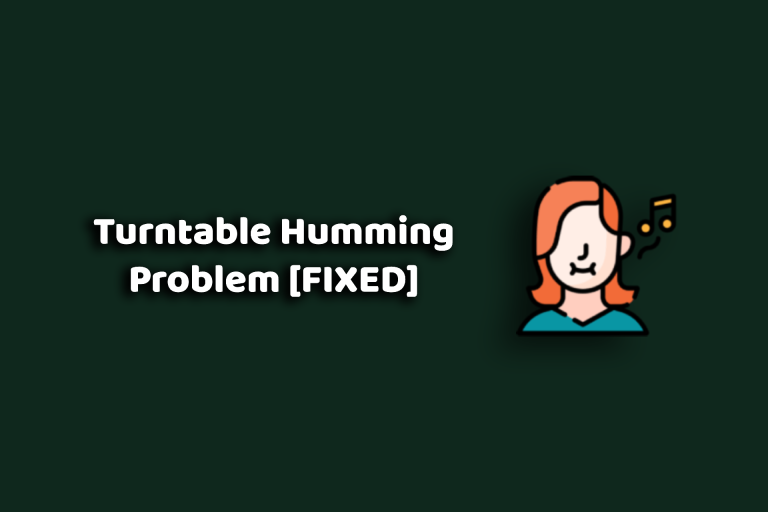How to Fix Warped Records: A Comprehensive Guide
Ever pulled out a favorite vinyl record only to find it warped? Frustrating, right? Don’t worry—I’ve been there too.
Fixing warped records is possible with a bit of care and patience. Let’s dive into some simple, effective methods to bring your records back to life!
Understanding Warped Records
Let’s start with the basics—what causes records to warp in the first place? Warping happens when heat, pressure, or poor storage practices mess with its shape.
What Causes Warping?
- Heat and Sunlight: Vinyl hates heat! Leaving your records near a window, in a hot car, or even too close to your speakers can lead to warping. Vinyl melts at about 140°F (60°C), so even moderate heat can do some damage.
- Improper Storage: Ever stacked your records horizontally? Bad idea. Over time, the weight causes uneven pressure, leading to bends or dish warps. Always store them vertically with proper support.
- Humidity: High humidity can make your records swell or warp. Aim for 35-45% humidity in your storage area. Too much moisture? Your records are at risk. Too little? They become brittle. It’s all about balance.
- Poor Handling: Tossing records around without their sleeves or leaving them on uneven surfaces (like your coffee table) can lead to minor warps that worsen over time.
Types of Warps
Now, not all warps are the same—some are fixable, while others might spell the end for your favorite tracks. Here’s what you need to know:
- Edge Warps: These are the most common and usually happen when the edges of the record are exposed to heat or pressure. You’ll notice them when the tonearm bounces or skips at the beginning of a track.
- Dish Warps: This type of warp often occurs from uneven weight distribution during storage. It’s tricky but not impossible to fix.
- Severe Bends or Distortions: These are rare but devastating. If your record looks more like a potato chip than a flat disc, it might be time to say goodbye. Severe warps often result from extreme heat or mishandling.
Also Read: How to Flatten Vinyl Records?
How to Identify a Warped Record?
Here’s how you can spot a warp before it ruins your listening experience:
Step 1: The Visual Inspection
First, let’s give the record a good old eyeball test. Place it on a flat, even surface (like a glass table or countertop). Look at it from eye level—does it lie completely flat? Or do you notice parts of the record lifting or curving?
Pay special attention to the edges. Edge warps often show as a slight ripple or lift along the perimeter. For dish warps, you might see the record sloping inward like a shallow bowl. This simple check can reveal a lot.
If you want to take it a step further, try using a flat object like a ruler or even another record to check for uneven spots.
Step 2: The Spin Test
Place your record on your turntable and start spinning it. Keep your eyes on the edge of the vinyl as it rotates—does it move up and down like a wave? That’s a classic sign of warping.
Watch the tonearm too. If it’s bouncing, skipping, or struggling to stay in the groove, chances are your record is warped. A slight bounce can indicate a minor issue, but if it’s hopping like it’s on a trampoline, the warp might be severe.
Step 3: The Audio Check
Sometimes, the warp isn’t visible but makes itself known when you listen. Here’s what to listen for:
- Distorted sound: If the music suddenly sounds like it’s wobbling or dragging, that’s a red flag.
- Skipping or repeating: Warps can cause the needle to jump grooves or replay sections.
- Pitch variation: Notice any odd changes in pitch? That’s your turntable struggling with the uneven surface.
One trick I’ve learned: Play a record you know really well. If something sounds off, it’s easier to pinpoint whether the warp is to blame.
Step 4: The Coin Test
Place your record on a flat surface and try balancing a small coin (like a penny or nickel) on the edges. If the coin tilts or slides, your record has an uneven surface, confirming the warp. This method is great for quickly checking minor warps.
Step 5: Using a Vinyl Weight or Clamp
Vinyl weights and clamps can help flatten minor warps temporarily during playback. If the clamp can stabilize the record and improve sound quality, you’re likely dealing with a small warp.
Warped records not only ruin the listening experience but also strain your turntable and stylus. Over time, this can lead to costly repairs. So, catching a warp early can save you both frustration and money.
Popular DIY Methods to Fix Warped Records
Fixing warped records at home is totally doable, but it’s important to approach it carefully. Remember, vinyl is delicate, and one wrong move could make things worse. I’ll walk you through each popular method step-by-step, so you can decide which one works best for you.
Method 1: The Glass Pane and Oven Method
This method is one of the most talked about in the vinyl community. It works by using heat to make the vinyl pliable and then flattening it under controlled pressure.
What You’ll Need:
- Two flat glass panes (clean and large enough to cover the record completely). Tempered glass is ideal.
- A conventional oven (avoid using a microwave—it’s not the same!).
- An oven thermometer (optional but helpful for accuracy).
- Oven mitts or heat-resistant gloves.
- A flat, heavy object (e.g., a thick book or a flat board).
Step-by-Step Instructions:
- Preheat Your Oven: Set your oven to a low temperature—around 150°F (65°C). Some vinyl enthusiasts recommend preheating to 170°F (77°C) and then turning it off when placing the record inside. This avoids prolonged exposure to direct heat.
- Prepare the Record: Sandwich your warped record between the two glass panes. Make sure the surfaces are completely clean to avoid scratching the vinyl.
- Place in the Oven: Turn off the oven if you haven’t already, and carefully place the glass-record sandwich inside. Use the middle rack to ensure even heat distribution. Close the door and let it sit for 10-15 minutes. This will make the vinyl soft enough to flatten without losing its grooves.
- Cool Under Pressure: After 15 minutes, remove the glass panes using oven mitts and place them on a flat surface. Immediately weigh them down with the flat, heavy object. Allow it to cool completely—this can take a few hours, but don’t rush it!
- Check the Results: Once cooled, carefully separate the panes and inspect the record. If it’s still warped, you can repeat the process, but be mindful not to overdo it. Too much heat or pressure can permanently damage the grooves.
Method 2: The Sunlight and Glass Method
This method is a gentler, more natural alternative. It uses sunlight to soften the vinyl and works similarly to the oven method, but with less risk of overheating. Perfect for mild warps!
What You’ll Need:
- Two flat, clean glass panes (same as the oven method).
- A sunny outdoor space or a spot near a large window.
- A flat, heavy object (like a book or board) for cooling.
- A timer (optional, but helps you monitor the process).
Step-by-Step Instructions:
- Prepare the Record: Just like before, sandwich the warped record between two glass panes. Ensure the surfaces are completely clean—dust or debris could scratch the grooves.
- Choose Your Spot: Find a sunny spot where the glass-record sandwich can sit undisturbed. A windowsill or a safe outdoor area works well. Ensure the surface is flat and stable.
- Position the Record: Place the glass panes with the record in the middle, ensuring it’s evenly covered. Sunlight will gently warm the vinyl, making it more pliable without the risk of overheating.
- Time it Carefully: Leave the record in sunlight for 15-30 minutes. Check periodically to ensure the vinyl isn’t getting too hot to the touch. If you live in a particularly hot climate, shorter intervals may be better.
- Cool Under Pressure: After the allotted time, bring the glass panes indoors and place them on a flat surface. Add a flat, heavy object on top to maintain even pressure while the vinyl cools. Let it sit for a few hours, or until it’s completely cooled.
- Check the Results: Once cooled, remove the record and inspect it. Play it to ensure the warp is gone and the sound quality is intact.
Also Read: How to Tell If a Turntable Cartridge Is Bad?
Method 3: The Heavy Weight Method
If you’re not comfortable using heat at all, this method might be your go-to. It’s the simplest and safest approach—using weight and time to gradually flatten the warp. While it takes longer, it’s a low-risk option for minor warps and doesn’t require any special tools.
What You’ll Need:
- A flat, hard surface (e.g., a sturdy table or countertop).
- A clean, protective sleeve or piece of cardboard to cover the record.
- Heavy books or flat weights (preferably 10-15 pounds in total).
Step-by-Step Instructions:
- Prepare the Record: Place the warped record inside its sleeve or between two pieces of clean cardboard. This protects the grooves from dirt and scratches while applying pressure.
- Set Up the Surface: Lay the record on a completely flat, hard surface. Make sure the area is stable and won’t be disturbed during the process.
- Apply Weight: Stack heavy books or flat weights evenly on top of the record. The goal is to distribute the weight uniformly across the surface to avoid creating new pressure points or unevenness.
- Leave it Alone: Patience is key with this method. Leave the setup undisturbed for at least a week. For more stubborn warps, you may need to leave it for two weeks or longer.
- Check the Results: After the waiting period, remove the weights and inspect the record. Play it to ensure the warp is gone and the audio quality is back to normal. If the warp persists, you can repeat the process.
Pro Tip: For best results, combine this method with proper storage techniques afterward to prevent the warp from returning.
Method 4: The Vinyl Flat Device
This tool is specifically designed to flatten records using controlled heat and pressure, making it a popular choice among serious vinyl collectors.
What You’ll Need:
- The Vinyl Flat device (available online, designed for vinyl flattening).
- A compatible heating pouch or system (often sold with the Vinyl Flat).
- Access to an electrical outlet for the heating element.
Step-by-Step Instructions:
- Set Up the Device: Unpack the Vinyl Flat and ensure all parts are clean and ready to use. The device typically includes two flat plates with felt lining to hold the record in place.
- Insert the Record: Place your warped record inside the Vinyl Flat, sandwiched securely between the felt-lined plates. Ensure it’s centered properly to avoid uneven pressure during the process.
- Heat and Flatten: Use the heating pouch to apply controlled warmth to the Vinyl Flat. Follow the manufacturer’s instructions for temperature settings and duration—most records require 2-6 hours of heating, depending on the severity of the warp.
- Cool the Record: After heating, let the Vinyl Flat cool completely with the record still inside. This step is crucial, as cooling under pressure helps set the vinyl back to its original shape.
The Vinyl Flat is highly effective for mild to moderate warps and is considered a safer option compared to DIY heat methods.
Also Read: How to Set Anti-Skate on Turntable
Save Your Records, Save the Tunes
Warped records might seem like the end of the road, but with a little care and patience, you can bring them back to life. Whether you try DIY methods or invest in a tool, the key is handling your vinyl with love. Ready to save your favorites? Let’s do it!


![Record Player Not Spinning Problem [FIXED]](https://www.turntablely.com/wp-content/uploads/2024/09/Record-Player-Not-Spinning-Problem-FIXED-1-768x512.png)


![Turntable Skipping Problem [FIXED]](https://www.turntablely.com/wp-content/uploads/2024/09/Turntable-Skipping-Problem-FIXED-1-768x512.png)
